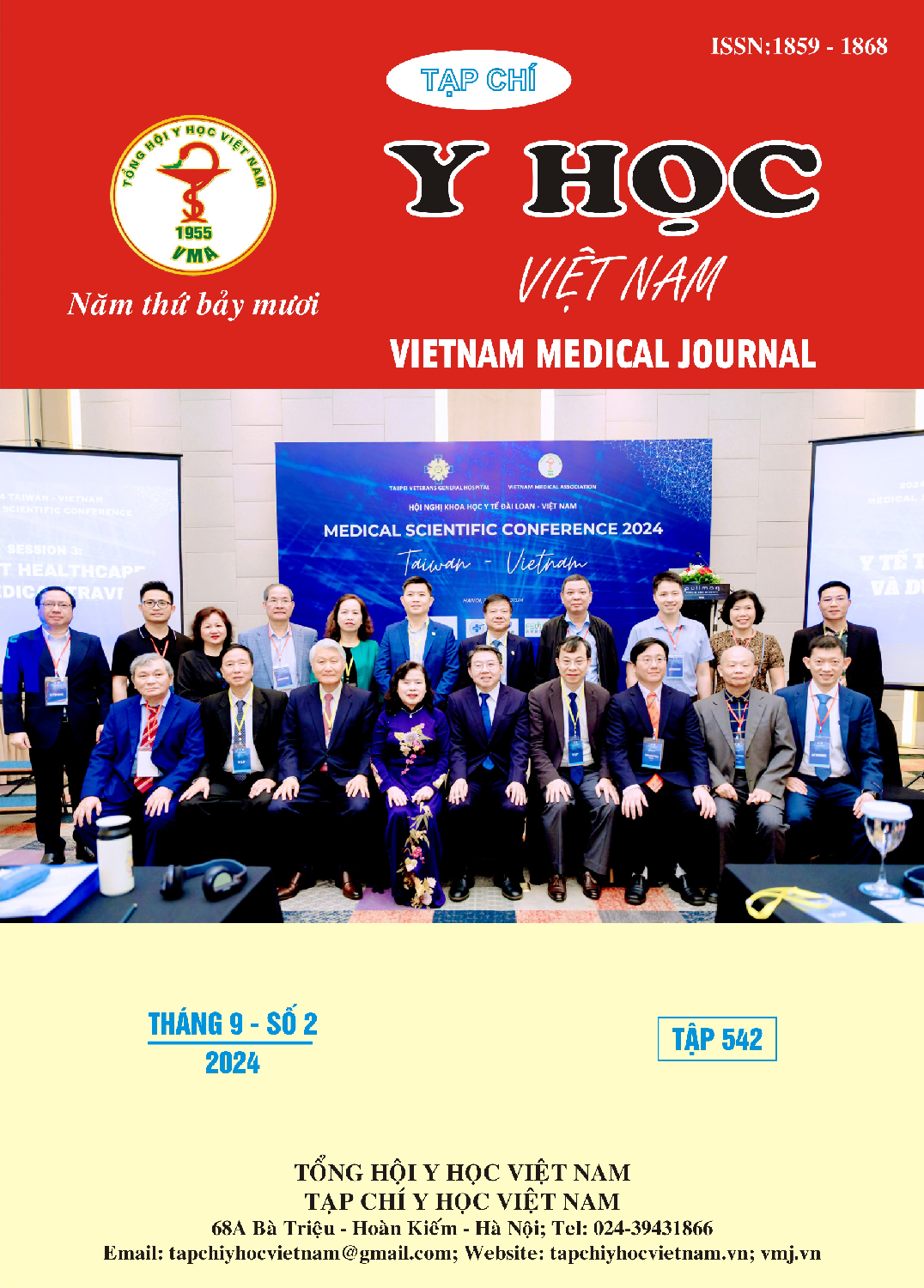CHARACTERISTICS OF THE SKIN INFECTIONS AND SEPSIS IN PATIENTS WITH GENERALIZED PUSTULAR PSORIASIS
Main Article Content
Abstract
Objective: To survey the skin infections and sepsis in patients with generalized pustular psoriasis (GPP) at Ho Chi Minh City Hospital of Dermato-Venereology. Methods: A descriptive case series was conducted on patients between October 2019 and September 2020. The diagnosis of GPP was relied mainly on clinical features, and histological examination was carried out if needed. The diagnosis of infection was based on clinical features, pustule culture, blood culture, procalcitonin (PCT) levels, and antibiotic susceptibility testing. Results: The study included 32 patients with GPP, and the positive pustule culture rate was 62.5%. The prevalence of skin infections was statistically significant (p = 0.049) in GPP patients with and without concurrent discharge. The positive blood culture rate was 3.1%, and the prevalence of sepsis or suspected sepsis in GPP patients was 18.75%. The difference in the proportions of sepsis or suspected sepsis between GPP patients with and without fever (p = 0.019), with and without rapid heart rate (p = 0.003), with and without rapid breathing (OR = 16.7, p = 0.011), with and without increased hs-CRP levels (OR = 1.23, p = 0.002), with and without decreased serum albumin (OR = 21 times, p = 0.006), and with severe GPP (OR = 13.57, p = 0.018) was statistically significant. Temperature was an independent factor related to sepsis or suspected sepsis in GPP patients. Conclusions: The incidence of skin infections among patients with GPP is relatively high. Sepsis represents a complication in GPP patients. Pustule culture and blood culture are necessary, particularly with increased PCT levels and indirect signs such as fever, tachycardia, tachypnea, increased hs-CRP levels, decreased serum albumin levels, and severe GPP.
Article Details
Keywords
Generalized pustular psoriasis, skin infection, sepsis.
References
2. Borges-Costa J., Silva R., Goncalves L., et al. (2011), "Clinical and laboratory features in acute generalized pustular psoriasis", American journal of clinical dermatology, 12 (4), pp. 271-276.
3. Choon S. E., Lai N. M., Mohammad N. A., et al. (2014), "Clinical profile, morbidity, and outcome of adult‐onset generalized pustular psoriasis: analysis of 102 cases seen in a tertiary hospital in Johor, Malaysia", International journal of dermatology, 53 (6), pp. 676-684.
4. Hoegler K., John A., Handler M., et al. (2018), "Generalized pustular psoriasis: a review and update on treatment", Journal of the European Academy of Dermatology and Venereology, 32 (10), pp. 1645-1651.
5. Tay Y. K., Tham S. N. (1997), "The profile and outcome of pustular psoriasis in Singapore: a report of 28 cases", International journal of dermatology, 36 (4), pp. 266-271.
6. Wang Q., Liu W., Zhang L. (2017), "Clinical features of von Zumbusch type of generalized pustular psoriasis in children: a retrospective study of 26 patients in southwestern China", Anais Brasileiros de Dermatologia, 92 (3), pp. 319-322.
7. Wang S., Xie Z., Shen Z. (2019), "Serum procalcitonin and C-reactive protein in the evaluation of bacterial infection in generalized pustular psoriasis", Anais Brasileiros de Dermatologia, 94 (5), pp. 542-548


